Do you know why there are a lot of pine trees in Japanese castles? You find many pine trees around castles all over Japan. There are a few reasons why a lot of pine trees were planted around Japanese castles. First, the pine tree is considered a celebration symbol in Japan as it represents perpetual youth and longevity due to its green color without withering throughout the year. Second, the pine tree is edible. The inner bark is white, soft, moist, and very high in vitamins A and C. It can be eaten raw as a snack, and green pine needles can make tea by boiling them. And Pine nuts are the main ingredient in making ‘Pasta Alla Genovese’ for Italian. There is one more reason. Pine trees contain flammable substances such as pine resin and oil. So, the pine tree is a good material to make a torch. Samurai worriers planted many pine trees in their castles as emergency food and firewood in case they were under siege.
BONSAI 盆栽
And pine tree is a typical tree of Bonsai. Have you ever heard of Bonsai? Bonsai is a kind of art and hobby that is the horticulture of miniature potted trees and plants. It dwarfed the natural landscape in a small container with a tree by pruning the trunk and wiring the branches. Bonsai gradually gain character as they grow by taking years or decades, sometimes centuries. They are life, so they are never completed. You enjoy its growth and changes forever.
Evergreen trees such as pine or cedar are the most often used, but many other trees are also preferred, such as fruit trees (like apples or plums) and flower trees (like wisteria) as well as deciduous trees (like maple).

Bonsai has many styles and shapes
Bonsai masters make shapes among the pine trees by pruning, wiring, and transplanting taking a long time. The following are a few of the basic shapes.
Chokkan (直幹) This is a common style. The trunk stands upright and the branches are symmetrically balanced. It depicts a powerful image such as a big tree on top of a hill.
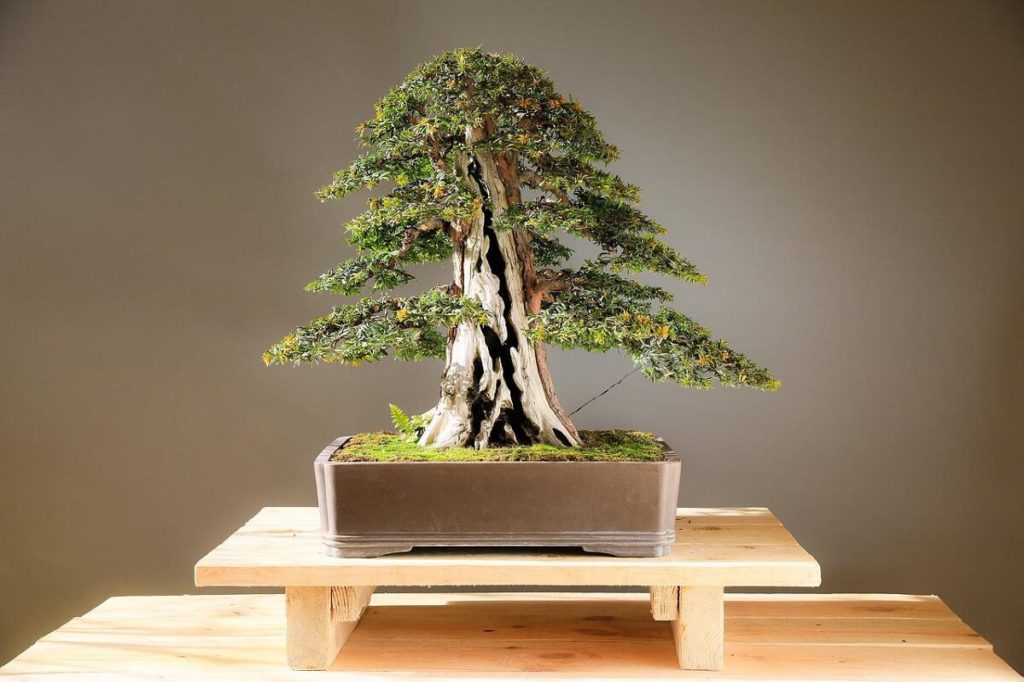
Shakan (斜幹)This style represents a tree that has been continued blowing by strong winds. Its trunk and branches are bent in one direction with wiring. It depicts patience and endurance in severe nature.
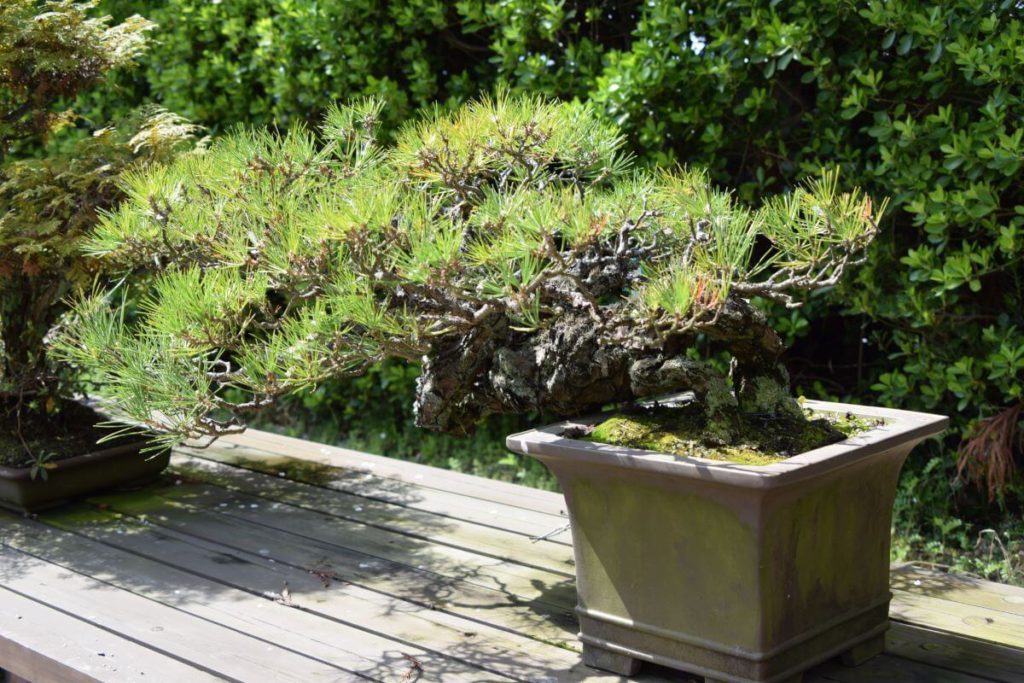
Kengai (懸崖) This tree appears to be hanging from a cliff. It grows downwards to a position lower than its root. It depicts the power of life and vitality even in harsh natural environments.
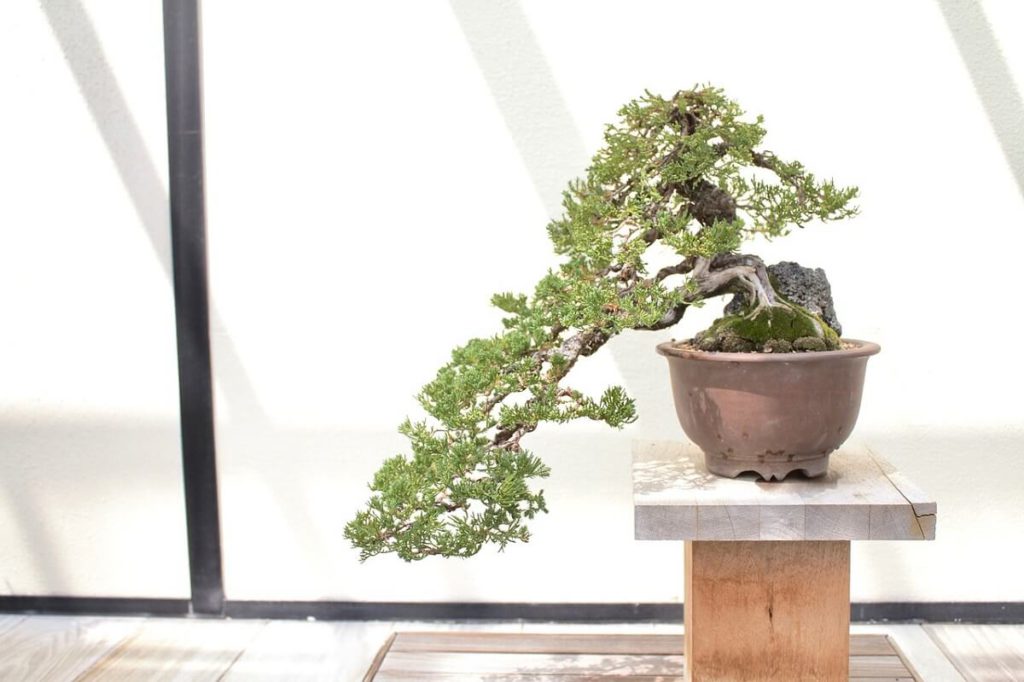
Samurai enjoyed Bonsai as a hobby in the twelfth century. It was gradually spread to ordinary people as a horticulture pleasure and sophisticated recreation. But it had been getting to become an elderly old-fashioned amusement. Nowadays, Bonsai is known as one a part of Japanese culture and it attracts enthusiasts worldwide.
I live in Osaka. I’m a volunteer guide trainee. I want to take you to many good sightseeing spots when you visit Osaka!

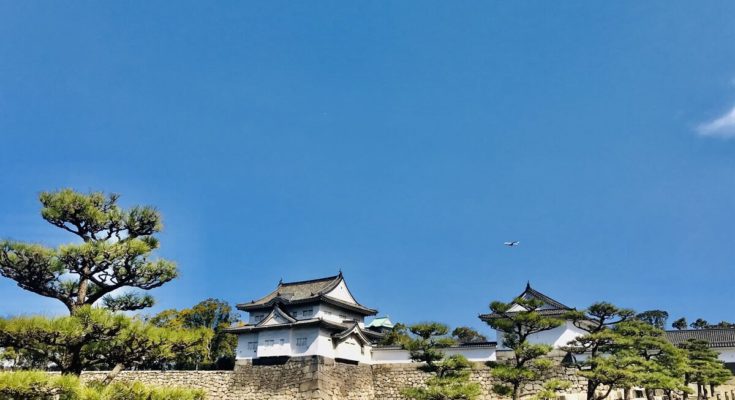
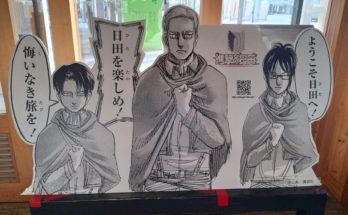


 HTJ has a YouTube page! Check it out
HTJ has a YouTube page! Check it out